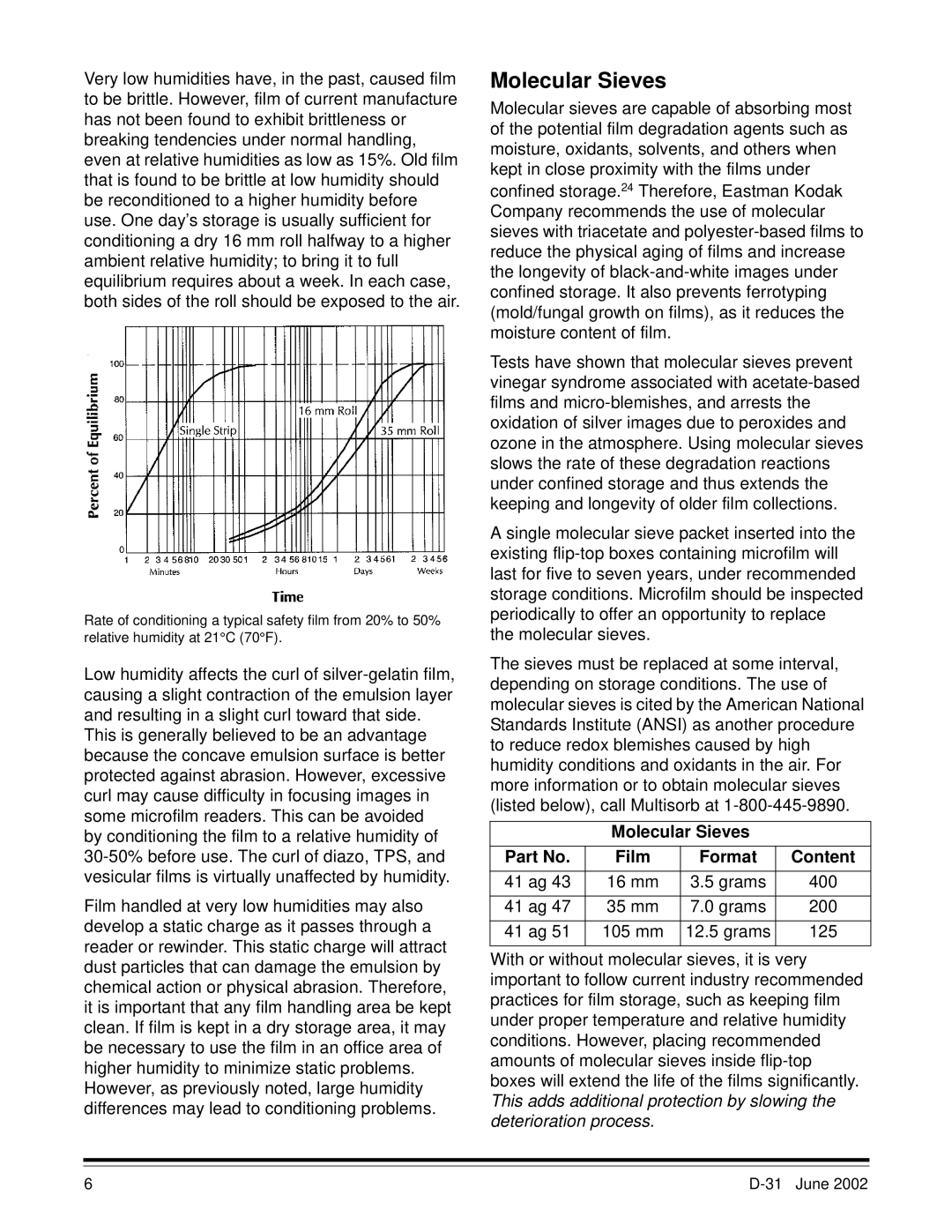D-31 specifications
Kodak D-31 is a color negative developer that has garnered attention for its unique set of features tailored to meet the demands of both professionals and enthusiasts in the field of photography. Designed primarily for use with color negative films, Kodak D-31 is known for delivering impressive results in terms of color reproduction, contrast, and image sharpness.One of the standout characteristics of Kodak D-31 is its flexibility in processing various types of color negative films. This developer can be used for a range of ISO sensitivity ratings, making it versatile for different photographic situations. Whether capturing landscapes, portraits, or street photography, D-31 ensures that the vibrant colors and subtle tones of each scene are accurately represented.
The technology behind Kodak D-31 incorporates a balanced mixture of color-forming agents and stabilizers that contribute to its reliability. The developer uses a carefully controlled chemical composition that ensures consistent performance with minimal grain, which is a critical factor for photographers who demand high-quality prints. The result is images that display fine detail and smooth transitions in color, which can be particularly important in post-processing and printing.
Kodak D-31 is designed for easy use, featuring a simple processing workflow that can be followed even by those new to film development. The Developer can be used with standard tanks and is compatible with both manual and automatic processing equipment. This ease of use makes D-31 an excellent choice for educational settings and home darkrooms, as it allows users to focus more on the art of photography rather than the technicalities of the developing process.
An additional advantage of Kodak D-31 is its ability to deliver consistent results across different batches, which is essential for those looking to maintain a cohesive portfolio. Photographers can rest assured that each roll developed will yield similar results, thanks to the high degree of control in the chemical composition and the assurance of quality that Kodak has provided for decades.
In summary, Kodak D-31 stands out as a reliable, versatile, and high-performance color negative developer that is well-suited for a variety of photographic applications. Its thoughtful formulation offers photographers the ability to capture and reproduce color with precision, making it a preferred choice for both hobbyists and seasoned professionals alike. With its blend of technology and ease of use, D-31 continues to be a valuable tool for anyone looking to explore the rich world of color film photography.

